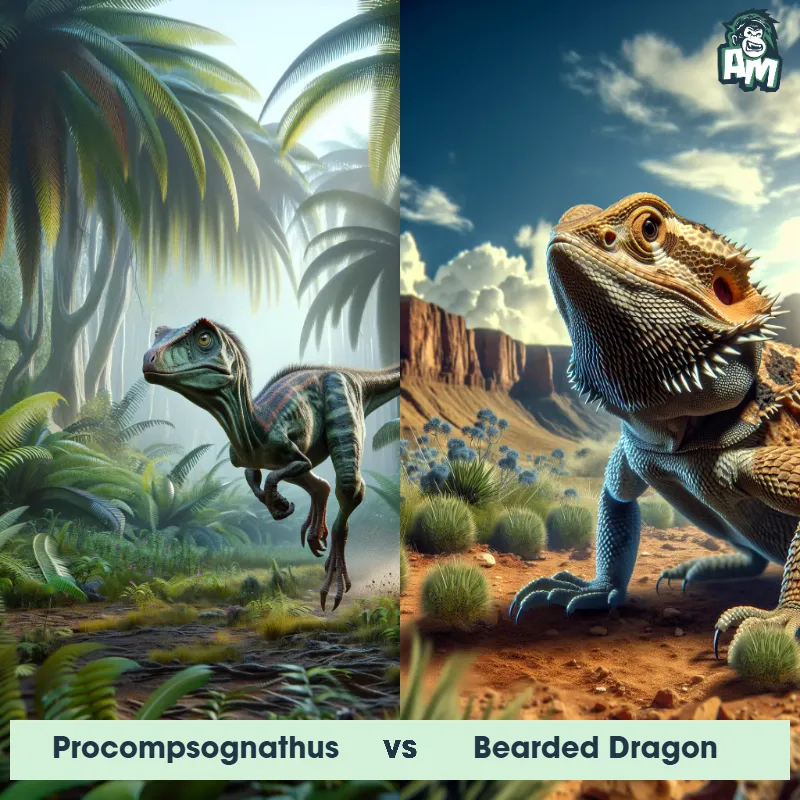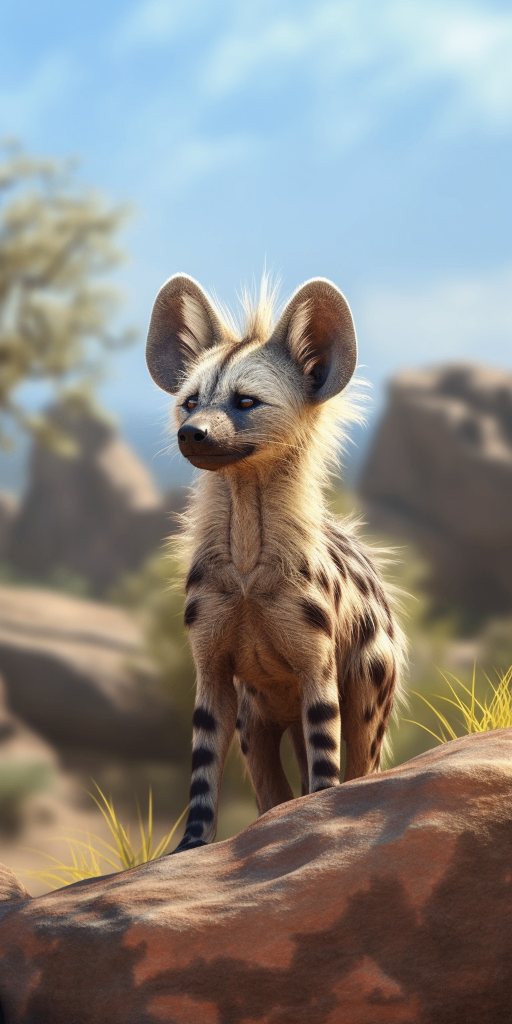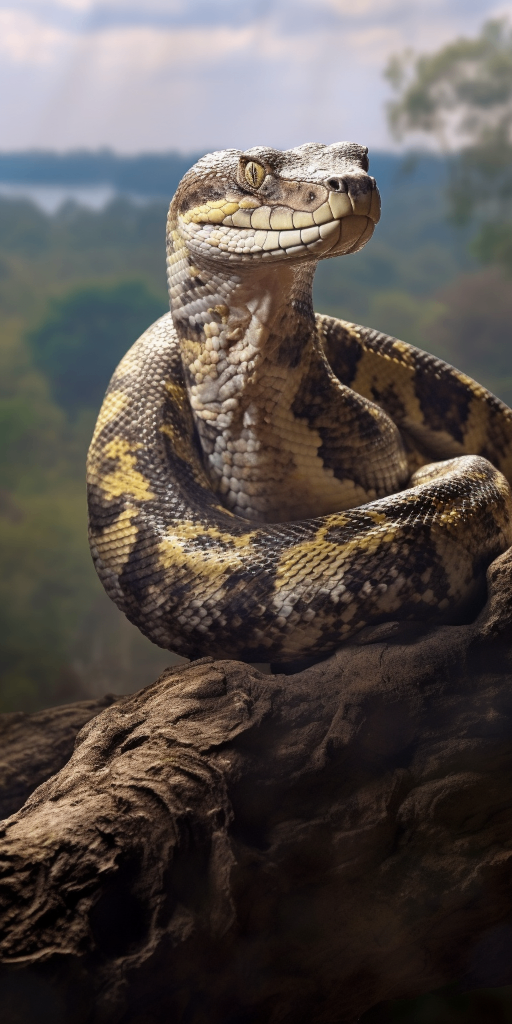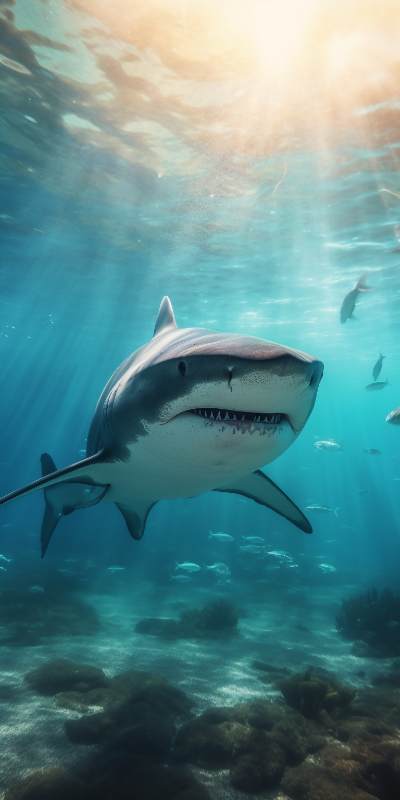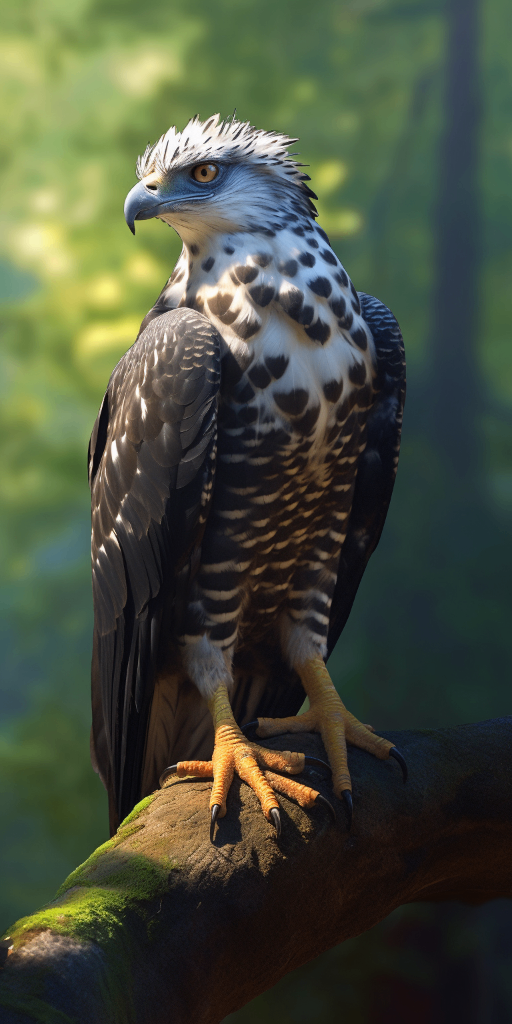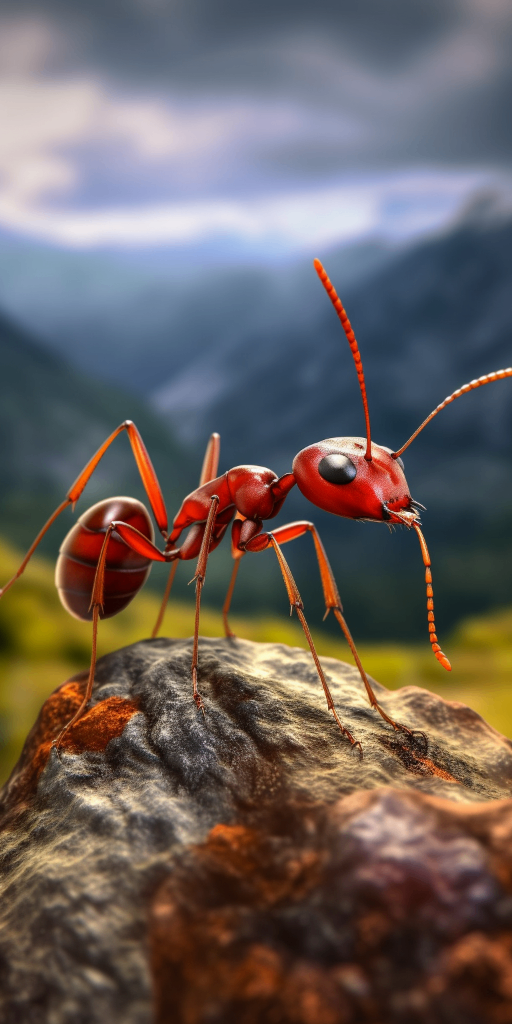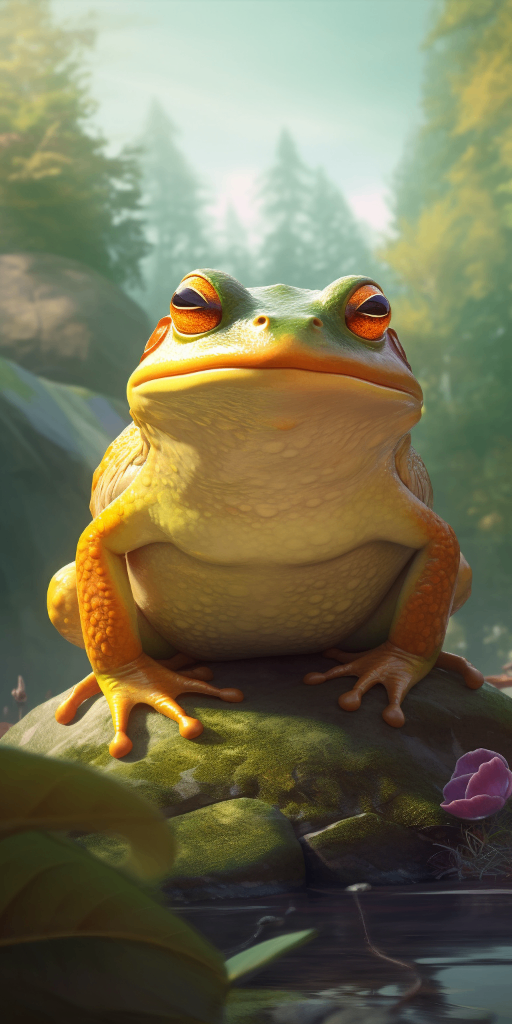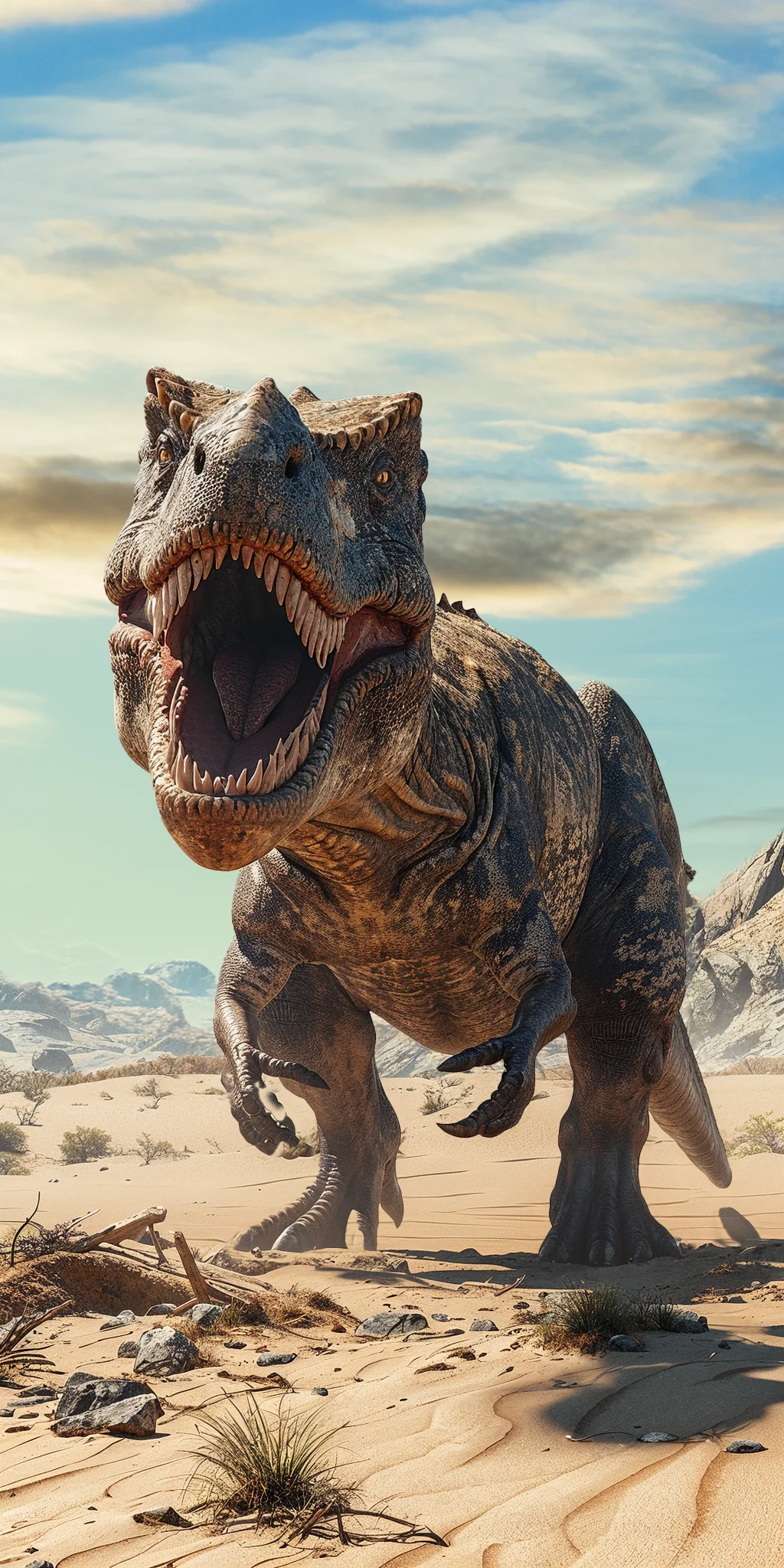The Bearded Dragon
The Bearded Dragon, also known as the Pogona, is a type of lizard native to Australia. These reptiles are known for their spiky appearance, which resembles a beard under their throat. They have a triangular-shaped head, long tail, and robust body covered in scales. Bearded Dragons come in various colors, including shades of brown, red, and yellow.
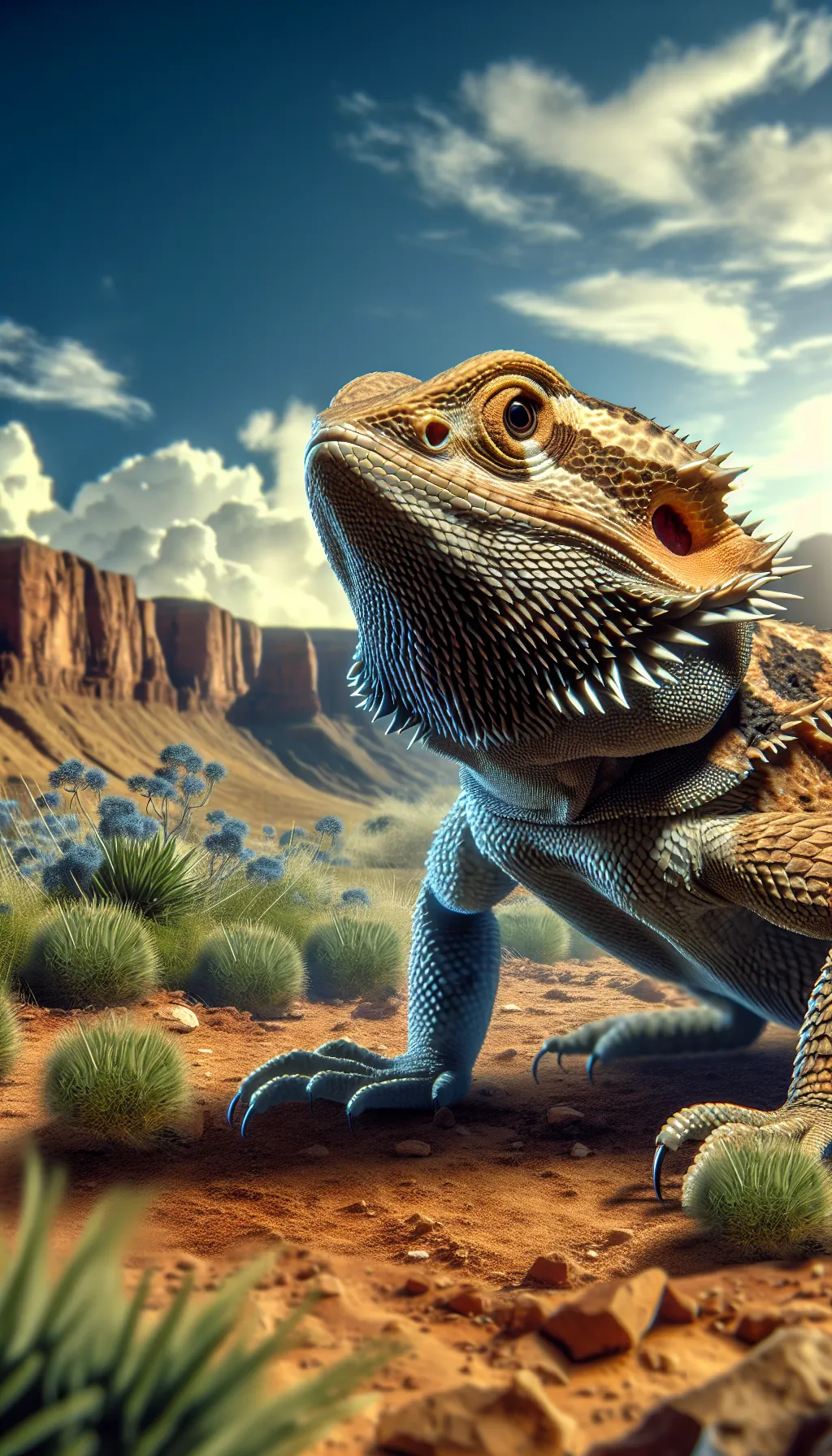
| Bearded Dragon | |
|---|---|
| Size | Up to 20 inches (51 cm) |
| Weight | Up to 18 ounces (510 grams) |
| Speed | 25mph (40km/h) to 28mph (45km/h) |
| Key Strength | Strong bite and sharp claws |
| Biggest Weakness | Slow movement |
| Scientific Name | Pogona |
| Family | Agamidae |
| Habitat | Arid and semi-arid regions |
| Geography | Australia |
| Diet | Insects, vegetables, and fruits |
| Lifespan | 8 years - 12 years |

The Bearded Dragon
The Bearded Dragon, also known as the Pogona, is a type of lizard native to Australia. These reptiles are known for their spiky appearance, which resembles a beard under their throat. They have a triangular-shaped head, long tail, and robust body covered in scales. Bearded Dragons come in various colors, including shades of brown, red, and yellow.
Fun Fact: Bearded Dragons are capable of changing their skin color to regulate their body temperature, turning darker to absorb more heat or lighter to reflect it.
| Bearded Dragon | |
|---|---|
| Size | Up to 20 inches (51 cm) |
| Weight | Up to 18 ounces (510 grams) |
| Speed | 25mph (40km/h) to 28mph (45km/h) |
| Key Strength | Strong bite and sharp claws |
| Biggest Weakness | Slow movement |
| Scientific Name | Pogona |
| Family | Agamidae |
| Habitat | Arid and semi-arid regions |
| Geography | Australia |
| Diet | Insects, vegetables, and fruits |
| Lifespan | 8 years - 12 years |
Bearded Dragon Matchups
We use AI to simulate matchups between the Bearded Dragon and other animals. Our simulation considers size, strength, and natural predatory behaviors to determine the most likely outcome.

Can't find the Matchup you want?
Create Your Own MatchupBearded Dragon: Diet, Predators, Aggression, and Defensive Behaviors
What do Bearded Dragons eat?
Bearded Dragons are omnivores, meaning they eat a variety of foods. Their diet consists of insects such as crickets, mealworms, and roaches, as well as leafy greens and vegetables like collard greens, kale, and squash. It's important to provide a balanced diet for them to ensure they receive all the necessary nutrients.
Do Bearded Dragons have any predators?
In the wild, Bearded Dragons have a few predators such as birds of prey, snakes, and larger lizards. Due to their ability to camouflage and their spiky appearance, they can blend into their surroundings and defend themselves from potential threats. However, hatchlings and juveniles are more vulnerable to predators as they are smaller and easier targets.
Are Bearded Dragons aggressive?
Bearded Dragons are generally docile and relaxed animals, but they can display aggressive behavior towards each other, especially during mating season. Males can become territorial and may exhibit head bobbing, arm waving, or even biting when interacting with other dragons. Proper handling and socialization can help minimize aggression in pet Bearded Dragons.
Do Bearded Dragons fight?
Bearded Dragons can engage in combat with each other, especially when competing for territory or during mating rituals. This behavior is more commonly seen in male dragons, who may engage in wrestling matches, head bobbing displays, and even biting. Fighting can result in injuries, so it's important to monitor their interactions if housed together.
How do Bearded Dragons defend themselves?
When faced with a threat, Bearded Dragons have several defense mechanisms to protect themselves. They can puff up their bodies to appear larger, change color to blend into their environment, and display their spiky beard to intimidate predators. In addition, they may try to escape or hide when feeling threatened.
What is Bearded Dragons' biggest weakness in a fight?
Despite their ability to display aggressive behavior and defend themselves, Bearded Dragons have relatively fragile skin that can easily tear or get injured during combat. Their spiky beard may deter some predators, but it's not always enough to prevent injuries in a fight. It's important to provide a safe and stress-free environment for them to avoid conflicts and injuries.
Fun Fact: Despite their intimidating appearance, Bearded Dragons are docile creatures that are popular as pets due to their friendly demeanor and relatively easy care requirements.
Fun Fact: Bearded Dragons have a third eye on the top of their head, known as the parietal eye, which helps them sense light and dark patterns and alert them to potential predators from above.



